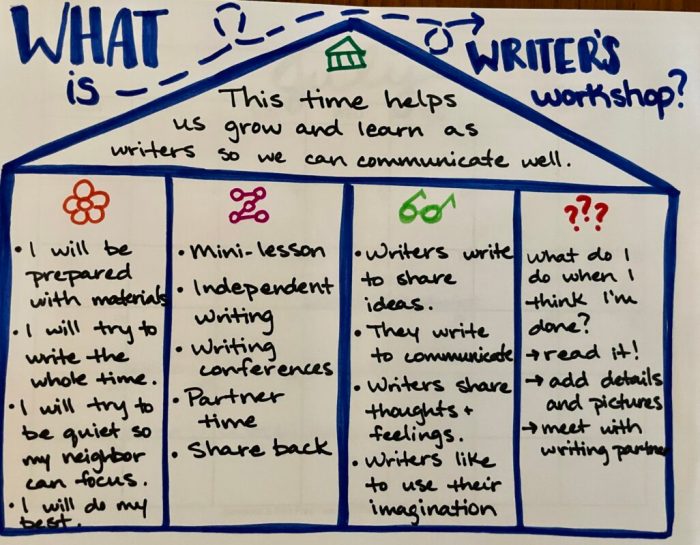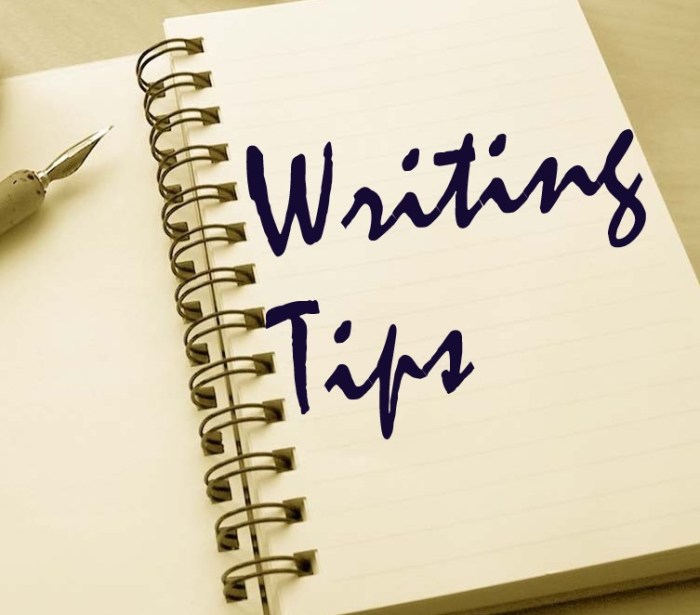Writing Tutorials and Guides kick off the creative journey with a bang, diving into the world of words in a way that’s fresh and exciting.
Exploring different types, essential components, and tools, these resources are key to honing your writing skills.
Overview of Writing Tutorials and Guides
Writing tutorials are instructional materials designed to teach individuals how to improve their writing skills. These tutorials typically provide step-by-step guidance on various aspects of writing, such as grammar, sentence structure, and organization. On the other hand, writing guides serve as reference materials that offer tips, rules, and examples to help writers navigate different writing scenarios.
Importance of Writing Tutorials and Guides in the Digital Age
Writing tutorials and guides are crucial in the digital age as they help individuals communicate effectively in various online platforms. With the rise of social media, blogging, and online content creation, the demand for quality writing has never been higher. Writing tutorials provide aspiring writers with the necessary tools to craft engaging and error-free content, while writing guides offer quick solutions to common writing dilemmas.
Target Audience for Writing Tutorials and Guides
The target audience for writing tutorials and guides varies widely, ranging from students looking to improve their academic writing skills to professionals seeking to enhance their business communication. Additionally, bloggers, content creators, and social media influencers can benefit from writing tutorials and guides to attract and retain their audience through compelling written content.
Types of Writing Tutorials
Writing tutorials come in various forms to cater to different writing styles and purposes. From academic writing to creative writing and technical writing, there is a tutorial for every type of writing need. Let’s explore some popular writing tutorial categories and examples available online.
Academic Writing
Academic writing tutorials focus on developing skills for writing essays, research papers, and academic reports. They often cover topics like thesis statements, proper citation techniques, and structuring academic papers. Examples of popular academic writing tutorials include Purdue OWL and Harvard Writing Center resources.
Creative Writing
Creative writing tutorials are geared towards helping writers unleash their creativity and enhance their storytelling abilities. These tutorials cover topics such as character development, plot structure, and different writing styles. Websites like Reedsy and Writers Write offer valuable resources for aspiring creative writers.
Technical Writing
Technical writing tutorials are designed for those interested in writing manuals, instructions, and technical documents. They focus on clarity, precision, and organization in writing. Examples of technical writing tutorials can be found on sites like Google’s Developer Documentation Style Guide and Society for Technical Communication resources.
Creating Effective Writing Guides: Writing Tutorials And Guides

When it comes to crafting a well-structured writing guide, there are several essential components that you need to consider. These components will help organize information effectively and make your guide visually engaging and easy to follow.
Essential Components of a Well-Structured Writing Guide
Before diving into the specifics of organizing information, let’s first discuss the key components that every writing guide should include:
- Clear Objectives: Clearly Artikel the goals and objectives of the writing guide to provide a clear direction for the reader.
- Structured Sections: Divide the guide into logical sections to help readers navigate through the content easily.
- Examples and Exercises: Include practical examples and exercises to reinforce learning and understanding.
- Visual Aids: Incorporate visuals such as diagrams, charts, and infographics to enhance understanding.
Strategies for Organizing Information Effectively
Organizing information in a writing guide can be challenging, but with the right strategies, you can make it more manageable:
- Use Headings and Subheadings: Break down the content into sections with clear headings and subheadings.
- Numbered Lists: Use numbered lists to provide step-by-step instructions or sequences.
- Bullet Points: Utilize bullet points to highlight key points or important information.
- Tables and Charts: Present complex data or comparisons in tables and charts for easy comprehension.
Tips for Making Writing Guides Visually Engaging, Writing Tutorials and Guides
Visual appeal is crucial in keeping readers engaged with your writing guide. Here are some tips to make your guide visually appealing:
- Use Color: Incorporate color schemes that are visually pleasing and enhance readability.
- Whitespace: Use whitespace effectively to avoid clutter and make the guide easier to read.
- Images and Graphics: Include relevant images and graphics to break up text and add visual interest.
- Consistent Formatting: Maintain a consistent formatting style throughout the guide for a polished look.
Tools and Resources for Writing Tutorials

Creating interactive writing tutorials requires the use of various software tools and online platforms to enhance the learning experience for students. Incorporating multimedia elements, quizzes, and exercises can significantly improve engagement and retention of the material.
Software Tools for Interactive Writing Tutorials
- Adobe Captivate: Allows for the creation of interactive eLearning content with features like quizzes and simulations.
- Camtasia: Enables screen recording and video editing for tutorials that require a visual component.
- Google Docs: Ideal for collaborative writing tutorials where multiple users can work on the same document simultaneously.
Online Platforms for Writing Tutorials
- WordPress: A versatile platform for creating written tutorials with the option to embed multimedia elements like videos and images.
- Quizlet: Great for incorporating interactive quizzes and flashcards into writing tutorials to test comprehension.
- Kahoot: Engage students with game-based learning through quizzes and challenges related to writing concepts.
Enhancing Writing Tutorials with Multimedia Elements
Including multimedia elements such as images, videos, and audio clips can help reinforce key concepts and make the tutorials more engaging for students. Visual aids can clarify complex topics, while audio elements can cater to different learning styles.
Incorporating Quizzes and Exercises for Better Engagement
Integrating quizzes and exercises throughout writing tutorials can provide students with opportunities to test their understanding and apply the concepts learned. By actively participating in assessments, students are more likely to retain information and stay engaged throughout the tutorial.